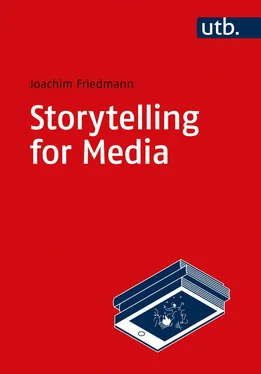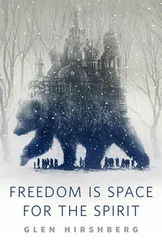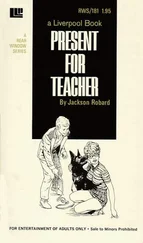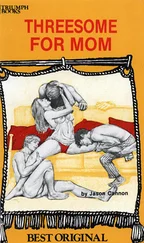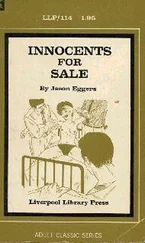In a mimetic dimension, these figures often seem less lifelike, rather larger-than-life and idealized. On a functional level, they don’t necessarily have to contribute to the progress of the action. Their function is most comparable to that of a mentor, as they often accompany and advise the main character on their archetypal heroic journey, which they usually undertake in a state of paradisical innocence, before completing their maturation process with the support of the thematic figures. But this role is not mandatory. With this type of figure, the focus is less on a functional assignment or mimetic dimension than on the representation of a particular world model or ideology that serves the main character as an example of how to shape his or her own life.
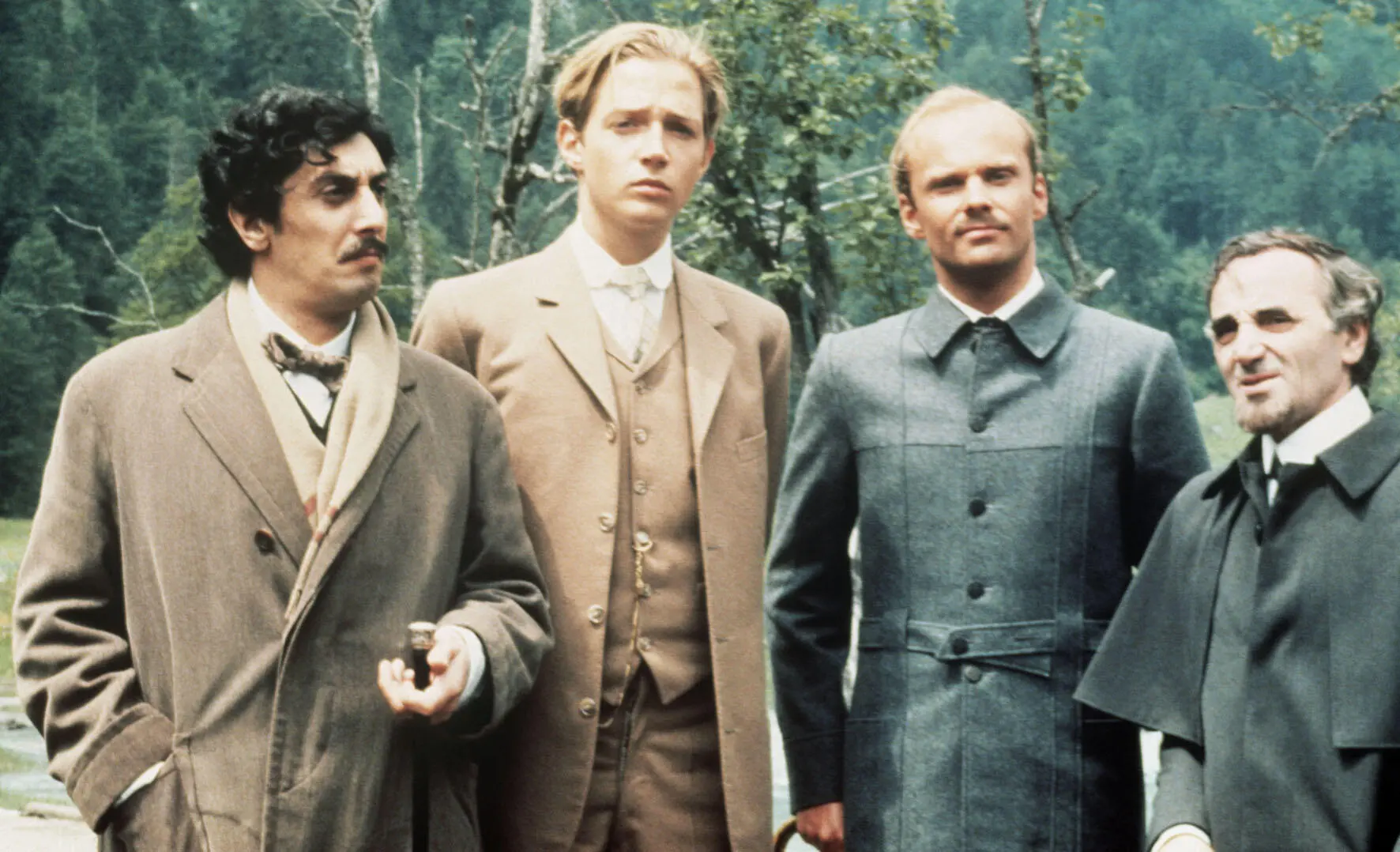
Protagonists of the film adaptation of The Magic Mountain (1982) by Hans W. Geißendörfer: Ludovico Settembrini (Flavio Bucci), Hans Castorp (Christoph Eichhorn), Joachim Ziemßen (Alexander Radszun), and Leo Naphta (Charles Aznavour). © Beta Film GmbH
These thematic figures are often organized in opposition pairs ( see Chapter 4 Binary Narrative Oppositions ) in order to emphasize their characteristics. Thus, the rational nature of Bagheera is emphasized in contrast to the fun-loving Baloo, as is the immoderate nature of Mynheer Pepperkorn and Clawdia Chauchat in contrast to the disciplined Joachim and the self-denying Naphtha. These thematic figures can stand not only in opposition to other figures but also in opposition to a setting, a narrative space ( see Chapter 3 Setting – The Narrated and the Narrative Space ). This constellation is known in Hollywood narrative cinema as the “fish-out-of-water” principle. Here, the main character must act assertively in an environment constructed in semantic opposition to the thematic aspects of their personality in order to generate a multitude of conflicts that force the character to act. Thus Elle Woods, initially described as naive, has to prove herself in Legally Blonde at the elite Harvard University. The romantic, naïve, Princess Giselle is moved from her fairyland to the modern, cold Manhattan in the film Enchanted . And Nemo’s father is literally a fish out of water saving his son in Finding Nemo .
Since the gnoseological narratives focus on the cognitive process, it makes sense to use this type of narrative with the corresponding characters in so-called “edutainment” formats, which combine narrative and didactic elements in order to convey certain insights to the recipients. For example, the German Soccer Association (DFB) mascot, PAULE, and his friends represent the values that the DFB stands for: fairness, respect, responsibility, and team spirit. PAULE, a role model, exemplifies these traits, while his friend Franziska embodies creativity, confidence, and commitment to women’s soccer. Emil and Katy stand for academic qualities and analytical intelligence by being experts in football rules, tactics, and analysis. Henri represents a fun spirit and the need for exercise, while Benni shows us that nutrition and sports go hand in hand. Even Winnie, who serves as an antagonistic force in the group with his sometimes misguided behaviour, wins the audience over with his passion for the game of soccer.

PAULE and his friends – from left to right: Winnie, Henri, PAULE, Franziska, Benni, Emil and Katy© 2021, DFB
Marketing and advertising campaigns also make use of this principle when basic characteristics or certain values that are to be linked with a product are embodied in a narrative figure – be it in the male, nature-loving cowboys of Marlboro cigarettes or Mr. Clean, who promises to power through tough stains.
If one examines further examples, one finds that in a narrative figure all three dimensions of character design are usually realized with different weightings. None of these three models can claim to capture the complexity of the narrative figure in its entirety. Depending on the narrative intention, different aspects of a figure are emphasized. In an action-adventure, psychological considerations are usually of secondary importance; the functionality of the characters as heroes, helpers, or opponents is in the foreground. When it comes to an interpersonal drama, the figure design focuses on mimetic aspects in order to create credibility and psychological depth. If thematic and didactic aspects are in the foreground, animals, robots, or other non-human protagonists can also become narrative figures – as in Aesop’s fables, in Disney films or in games – without losing credibility.
2.4 Anti-narrative Figures

Max Payne is a third-person shooter video game; the design is strongly influenced by the aesthetics of neo-noir and graphic novel. © Niranjan, 2004 on flickr under CC BY 2.0 https://www.flickr.com/photos/shany_410/11254934962004
The design dimensions described here can, of course, also be deliberately undermined. Thus, the concept of mimesis is called into question when a narrative figure becomes aware of its status as a narrated character – and thus communicates to the recipients that it is not taken from life but from a book or a film, like Harold Crick, the protagonist of the film Stranger than Fiction or Max Payne, the hero of the game series of the same name. Some storytellers even refrain from designing their characters with a clearly defined identity, such as Salman Rushdie, whose protagonist Gibreel from The Satanic Verses has several identities and is at the same time a Bollywood actor as well as the archangel Gabriel. In Beckett’s Waiting for Godot , the protagonists Vladimir and Estragon no longer have a consistent identity at all, and thus no thematic or mimetic credibility, nor a function within the plot. What would be perceived as a mistake in a prototypical narrative is, in this case, a consciously-set, artistic means of expression. Here the creator is actively working against the willing suspension of disbeliefof the viewers in COLERIDGE’s sense. Intertextual procedures also reveal the artificiality of the text and the figures. For example, Turgenev in King Lear of the Steppes or Akira Kurosawa in Throne of Blood use figures that come from Shakespeare’s dramas as a reference to the original narrative and thus also to reveal their origin as imaginary figures that do not come from life.
Although this type of figure design is increasingly used in postmodern literature and contemporary drama, it would be wrong to see it as a narrative strategy. Empirical research suggests that a text must have an anthropomorphic, goal-oriented protagonist in order to be perceived as a narrative. In this respect, such design methods are to be regarded as anti-narrative; they are used to achieve an artistic effect, as shown by the example of the Beckett drama. However, they work with figures that are not to be regarded as prototypically narrative for this purpose.
Chapter 2 summary:
The imitation of acting people is foundational for a narrative, as Aristotle states. A narrative figure is a representation of a human character, which would describe the mimetic dimension, but there is also a functional dimension that describes the purpose of the narrative figure in the plot of the narrative. The thematic dimension describes a figure that represents a particular ideological or philosophical worldview. Such figures appear most often in narratives in which the center of the plot is the main character gaining knowledge. Most narrative figures unite all three dimensions of figure design, whereby the respective weighting differs according to the type of story and genre. In some narratives, this character design is undermined for artistic reasons, in which, for example, a figure is not assigned a clearly defined identity or is conscious of its status as a narrated character, thus questioning the mimetic dimension of the figure.
Читать дальше
